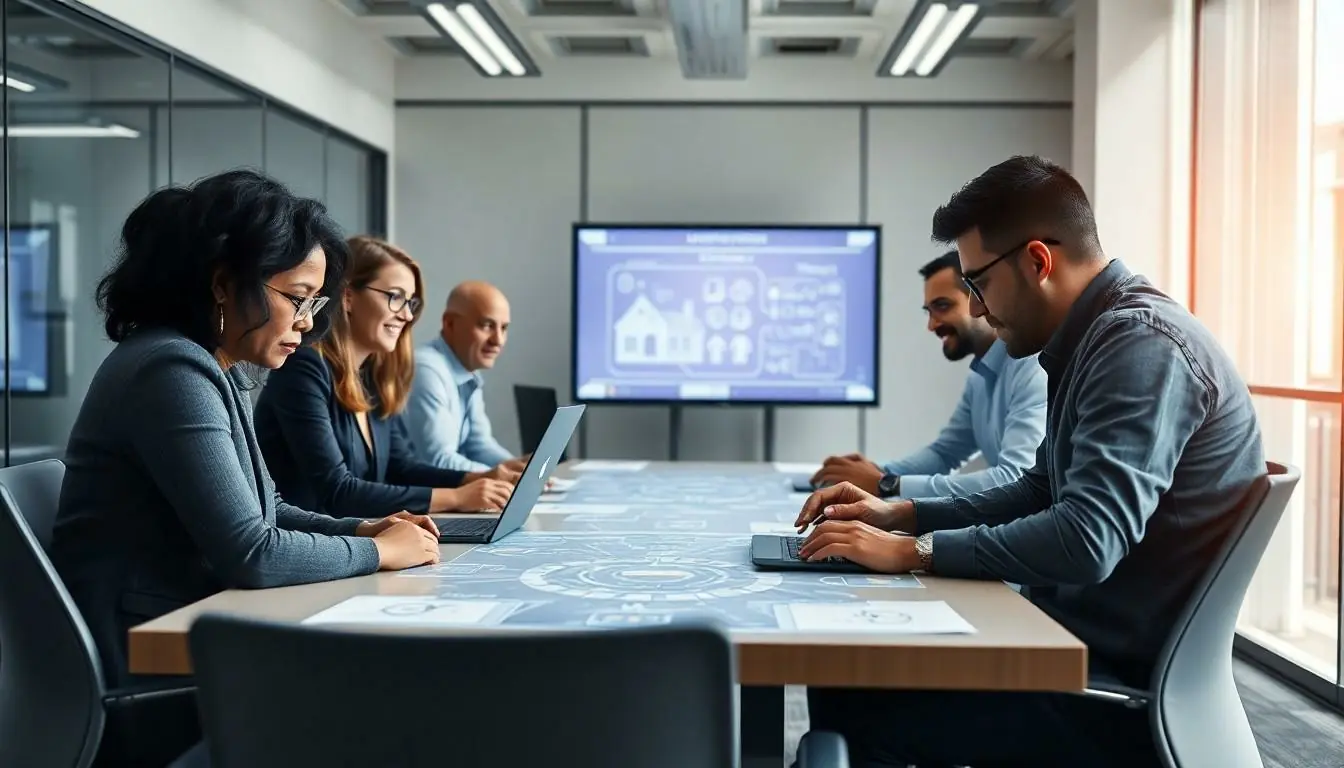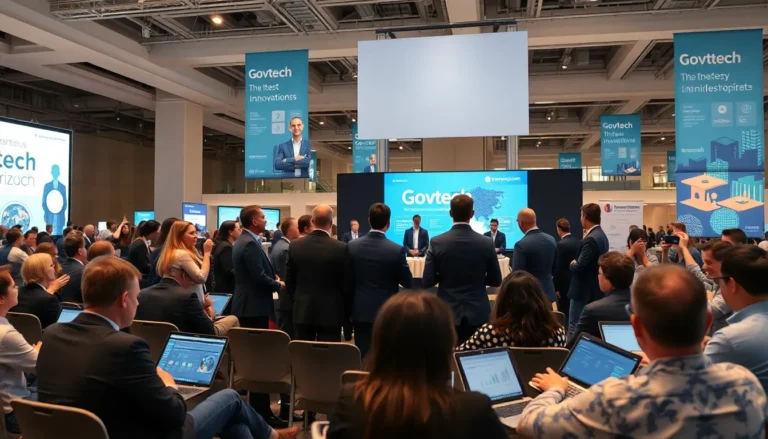Table of Contents
ToggleIn a world where cyber threats lurk around every digital corner, government technology (govtech) is stepping up its game. Think of it as the superhero of the tech realm, donning a shiny cape made of firewalls and encryption. But let’s face it—no superhero is invincible. With hackers getting craftier than a cat in a laser pointer factory, the stakes are higher than ever for public sector organizations.
Govtech cybersecurity isn’t just a buzzword; it’s the vital shield protecting sensitive data and ensuring smooth operations. From safeguarding citizen information to securing critical infrastructure, it’s a battle fought daily. So, buckle up as we dive into the fascinating world of govtech cybersecurity, where innovation meets vigilance and a dash of humor keeps the tension at bay. After all, who said protecting the digital realm couldn’t come with a few laughs?
Overview of GovTech Cybersecurity
GovTech cybersecurity encompasses the strategies and technologies that safeguard government systems, data, and services against cyber threats. This sector faces persistent risks as cybercriminals develop increasingly sophisticated methods to infiltrate government networks. Agencies employ various tools such as firewalls, encryption, and intrusion detection systems to protect sensitive information.
Protecting citizen data remains a top priority for government entities. Personal information about millions is at risk, necessitating stringent cybersecurity measures. By integrating advanced technology solutions into their infrastructure, agencies can reduce vulnerabilities and enhance resilience against attacks.
Government organizations also recognize the importance of continuous training and awareness programs. Regular education helps employees identify potential threats like phishing scams and social engineering tactics. Incident response plans further equip organizations to react swiftly and effectively during cyber emergencies.
Collaboration among government sectors plays a vital role in strengthening cybersecurity. By sharing intelligence on emerging threats, agencies cultivate a proactive defense strategy. Partnerships with private sector companies provide additional resources and expertise, enhancing overall security posture.
Data breaches can result in severe consequences, affecting public trust and operational capabilities. The consequences of an attack can lead to significant financial losses and legal implications. Therefore, investing in robust cybersecurity frameworks not only protects data but also maintains the integrity of government institutions.
Ultimately, the intersection of innovation and vigilance is crucial in GovTech cybersecurity. Agencies must continuously adapt to the evolving threat landscape, ensuring they utilize the latest technologies and best practices to safeguard their operations and the citizens they serve.
Key Challenges in GovTech Cybersecurity

GovTech cybersecurity faces numerous challenges that impact the protection of public data and infrastructure. Identifying vulnerabilities remains a critical task for government agencies.
Identifying Vulnerabilities
Agencies must continuously analyze their systems for potential weaknesses. Regular assessments, including penetration testing and vulnerability scanning, help uncover hidden risks. It’s vital for staff to stay informed about the latest threats, as new vulnerabilities appear frequently. Maintaining a proactive approach ensures that agencies can address issues before they escalate. Developing comprehensive policies to manage identified vulnerabilities plays a significant role in fortifying defenses. Strengthening the collaboration between IT departments and policymakers can enhance these efforts, ensuring greater awareness and responsiveness.
Protecting Sensitive Data
Safeguarding sensitive data requires a multifaceted strategy. Encryption serves as a cornerstone, transforming data into unreadable formats except to authorized users. Implementing access controls limits who can view or modify critical information, reducing the risk of breaches. Regular training on data handling is essential for employees, ensuring they understand best practices. Agencies must also adopt resilient data storage solutions, combining on-premises and cloud strategies for enhanced security. Scheduling routine audits can help verify compliance with established security protocols. Developing incident response plans prepares agencies for swift actions during data breaches.
Best Practices for Enhancing Security
Implementing effective security measures is paramount for govtech organizations. Robust security frameworks provide structured approaches to protect sensitive information. Using tools like firewalls, encryption, and access controls establishes a solid foundation. Regular assessments through penetration testing and vulnerability scanning help identify weaknesses. Agencies must also integrate incident response strategies to react swiftly during breaches.
Training and awareness programs play a vital role in enhancing security. These initiatives educate employees about the evolving threat landscape. Understanding potential cyber risks empowers teams to recognize suspicious activities. Regularly scheduled training sessions reinforce best practices for data handling. Encouraging a culture of security awareness promotes proactive behavior among government staff. A well-informed workforce greatly reduces the likelihood of successful cyber attacks.
Emerging Technologies in GovTech Cybersecurity
Innovative technologies are transforming govtech cybersecurity. These advancements enhance the ability to protect sensitive data and infrastructure from evolving threats.
AI and Machine Learning Applications
AI and machine learning enhance threat detection and response times. Algorithms can analyze massive datasets to identify unusual behavior patterns that human analysts might miss. Implementing these technologies allows agencies to predict potential breaches before they occur. Rapid analysis of historical data supports proactive measures in cybersecurity. Additionally, machine learning systems improve over time, adapting to new tactics employed by cybercriminals. Integrating these tools fosters a dynamic security environment that continuously evolves with emerging threats.
Blockchain for Enhanced Security
Blockchain technology offers a secure framework for protecting sensitive information. It provides immutability, ensuring that data cannot be altered once recorded. Secure transactions benefit government agencies particularly in identity management and supply chain integrity. By employing decentralized ledgers, agencies can reduce the risks associated with data breaches. Furthermore, streamlined processes improve transparency and accountability in data handling. Organizations can also leverage smart contracts to automate compliance and reduce human error. Overall, blockchain enhances trust in digital government services, making it a vital component in modern cybersecurity strategies.
Govtech cybersecurity stands at the forefront of protecting sensitive government data and infrastructure. As cyber threats evolve, agencies must remain vigilant and proactive in their security measures. By leveraging innovative technologies and fostering collaboration, they can enhance their defenses against increasingly sophisticated attacks.
The commitment to continuous training and awareness ensures that employees are prepared to recognize and respond to potential threats. With a focus on robust security frameworks and regular assessments, government institutions can safeguard public trust and maintain operational integrity. Embracing the intersection of innovation and vigilance is key to navigating the complexities of today’s digital landscape.






